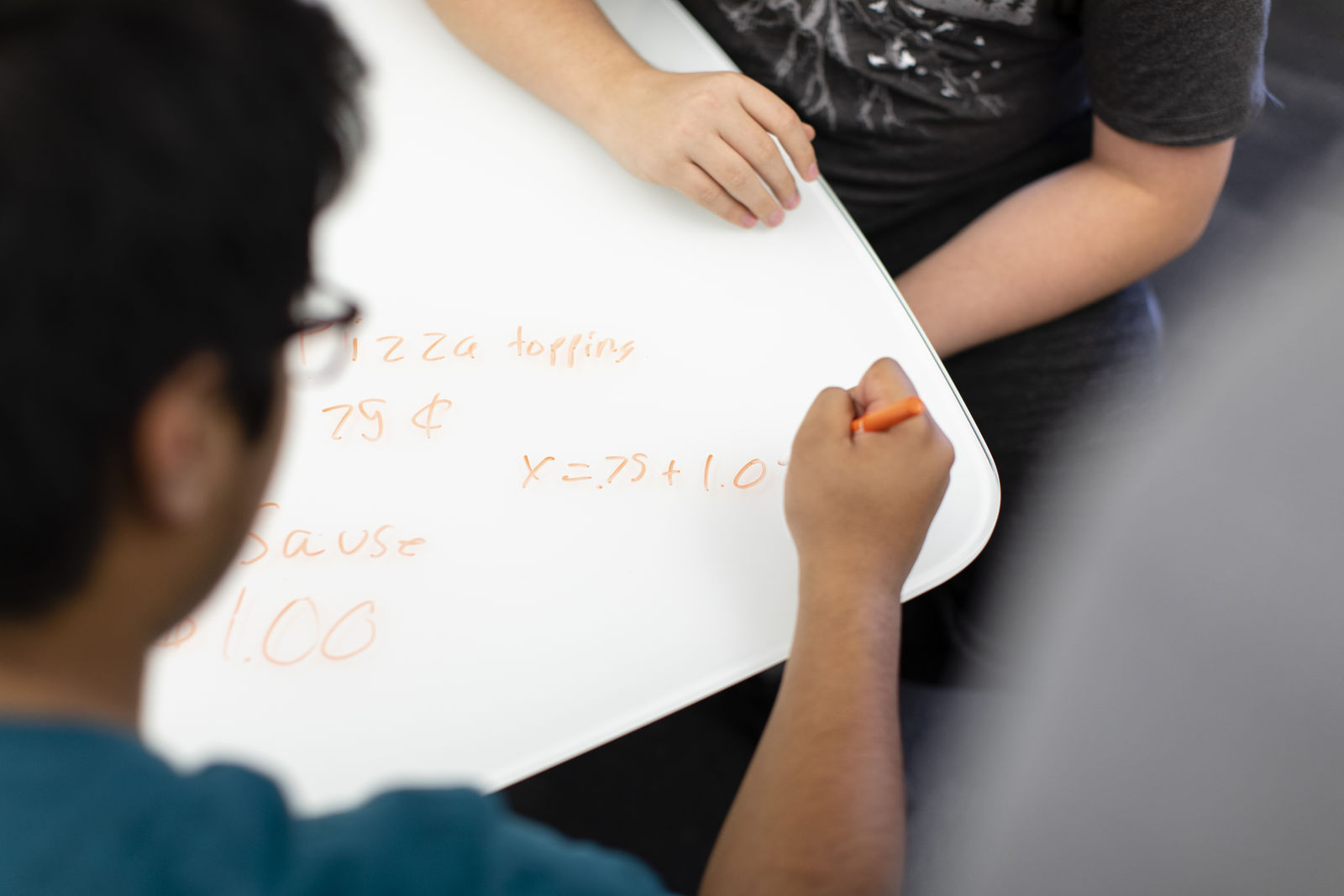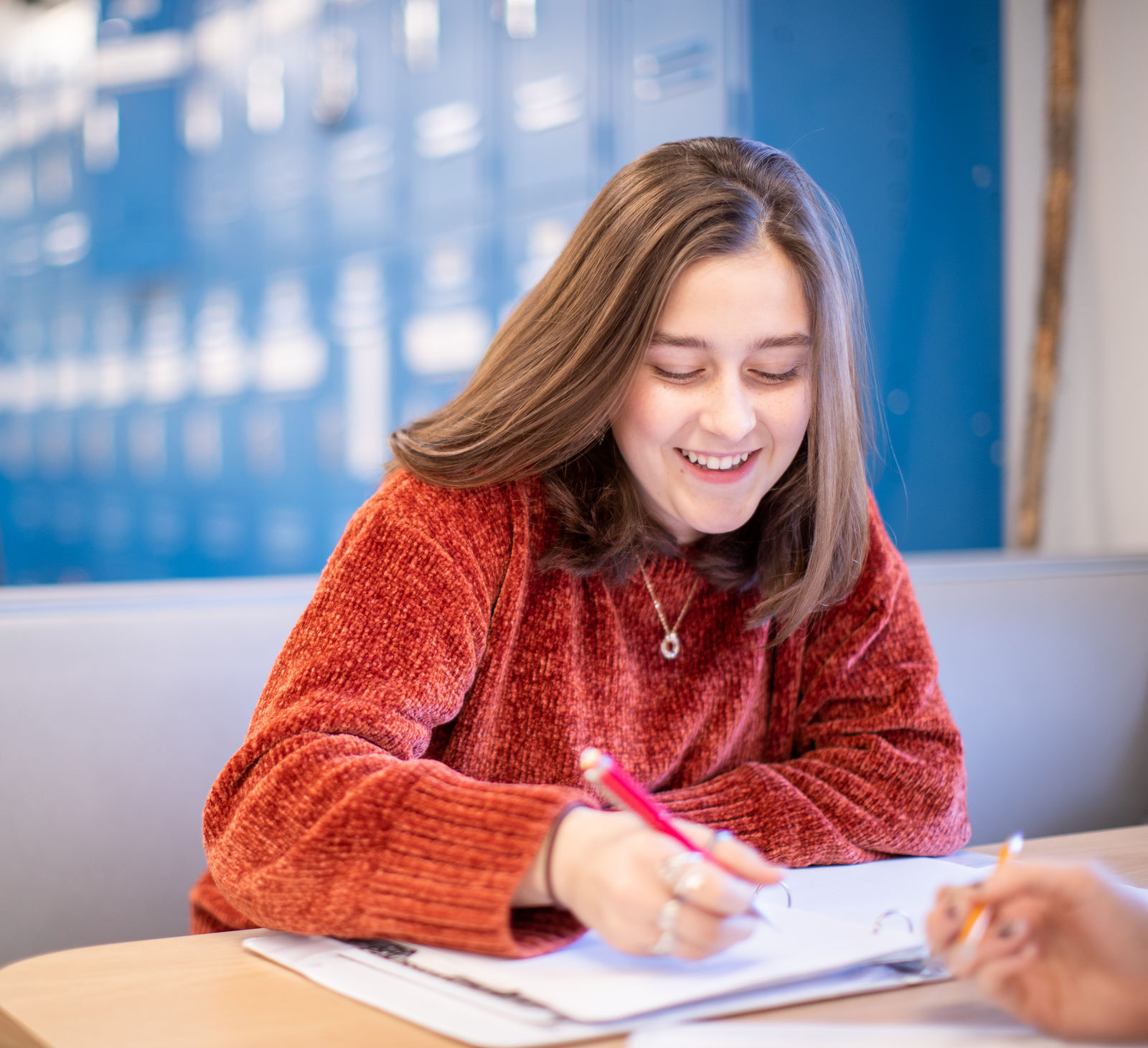Course Overview: Foundation Phase Mathematics
From modeling their weekly life with equations to playing a game of Battleship with linear inequalities, this freshman mathematics course is designed to engage students in worthwhile math investigations and explorations. Students begin developing the skills they will need to be successful as they progress through their mathematical experiences.
There is plenty of rigor to challenge students, while offering accessibility for students who may need some review or who are often challenged by the more abstract concepts found in high school mathematics. We introduce norms for doing mathematics as students begin to take responsibility for their own learning under the guidance of a mentor.
This course is split into four journeys, each a foundational topic for high school mathematics, and each presented with contextual connections to maximize student success.
Journey 1: Equations, Inequalities, and Systems
The emphasis of this journey is on learning what mathematics is and how one goes about doing it. Students engage in the process and practice of doing mathematics as they investigate a variety of real-world contexts.
Activities and Artifacts
- Describe a swimming meet using linear equations.
- Investigate and report on the role basic matrices play in viewing images on mobile devices.
- Document and support the work done and reasoning used when applying inequalities while playing a game of Star Challenge.
- Decipher a mysterious message using linear inequalities.
- Play a game of Battleship, using equations of lines and inequalities.
Journey 2: Descriptive Statistics and Probability
Students begin this journey with a study of the language and tools of statistics. They look at what statistics studies (variations) and how it studies them (distributions). Students describe data numerically and graphically, collect data, and work with probability and inference.
Activities and Artifacts
- Investigate the sound of popping popcorn as a normal curve. Collect data, determine an appropriate graph for the data display, and interpret the data.
- Describe trends in movie profits by using scatterplots.
- Summarize data from polls using relative frequency tables.
- Apply probability of dependent events to game shows.
- In this journey’s project, I Wonder, students are in the driver’s seat as they decide what their “wonder” is. Students might wonder about which option their community favors in relation to a community issue, or they might just wonder what types of pets their classmates have. Students formulate questions, administer surveys, and collect and organize data. They select and use appropriate statistical methods as they analyze the data. Inferences and prediction are developed and evaluated, based upon the collected data. And students extend their work as they explore probabilistic situations. Students make a final presentation and discuss the challenges, possible sources of error, and what they would modify or improve in a similar future project.
Journey 3: Function Festival
Students begin this math unit with an introduction to linear functions, their notations and graphs, as well as how to identify what is and what is not a linear function. Students use graphing technology to investigate how graphs change when different quantities in the equation change. Real-world contexts, themed around a winter festival, provide students exposure to and opportunities to work with the different representations of linear functions as well as piecewise defined functions. Students then apply these functions as they create models for a variety of contexts. The unit concludes with students solving a mystery using the clues they found as they worked through the journey.
Activities and Artifacts
- Students use linear functions to determine how many tiles are needed to build a tile patio for a winter party in Hawaii.
- Students learn about sled dog ages in human years, domain, range, and changes in slope. They use ordered pairs, a table of values, and a scatterplot to determine a function that represents real-world data.
- Model different contextual situations focused around a winter festival theme with a linear function. Use the functions to make predictions.
- In this journey’s project, Function Festival, students use clues collected throughout the journey to complete a scavenger hunt at the festival and find a hidden treasure.
Journey 4: Modeling Your World with Math
The final journey for Foundation Phase Mathematics focuses on situations that can be modeled with nonconstant rates of change. The unit begins with two topics that are familiar to students, perimeter and area for a rectangle. From there, we introduce quadratics, and students explore the characteristics and defining properties of this family of functions. We present students with an equation, a real-world word problem, the graph of a function, and the table of values that represent a function. Then, students determine specific information or make predictions about the context. Students reason about exponents and the zeros of a quadratic as they determine the solution(s) for various quadratic and quadratic-type equations.
Activities and Artifacts
- Predict the path of a projectile using a projectile motion simulator while identifying points of interest on the graph.
- Complete a geometric proof, without words, of why completing the square works.
- Students graph a quadratic function that models the shape of a bridge trestle and then solve the related quadratic equation by completing the square.
- Determine the data for Instagram revenue and then make predictions for future revenue amounts using quadratic regression.
- The Modeling Your World with Math final project engages students with literature — Virgil’s Aeneid — as they circle back to where this unit began by investigating maximizing area.
This course emphasizes an understanding of math concepts, as opposed to memorizing facts. It emphasizes skills including establishing meaning, using and creating models, interpreting patterns, composing explanations, and validating conclusions. Quest Forward students learn the context behind procedures and come to understand why they would use a certain formula or method to solve a problem. By engaging students in real-world applications, this course develops critical thinking skills that students will use in college and careers.


